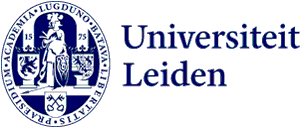142 search results for “aggregates” in the Public website
-
In vivo tracking and biodistribution of protein aggregates
Therapeutic proteins have revolutionized the treatment of many severe diseases like multiple sclerosis, haemophilia, diabetes and many more. Unfortunately, even recombinant proteins with structures (almost) identical to those of their endogenous counterparts often induce the formation of anti drug antibodies…
-
In vivo fluorescence imaging of IgG1 aggregates after subcutaneous and intravenous injection in mice
PURPOSE: To monitor the biodistribution of IgG1 aggregates upon subcutaneous (SC) and intravenous (IV) administration in mice and measure their propensity to stimulate an early immune response.
-
Putting a spin on it: amyloid aggregation from oligomers to fibrils
This thesis focuses on amyloid proteins, a class of proteins that convert into amyloid fibrils.
-
Small amounts of sub-visible aggregates enhance the immunogenic potential of monoclonal antibody therapeutics
PURPOSE: Determine the effect of minute quantities of sub-visible aggregates on the in vitro immunogenicity of clinically relevant protein therapeutics.
-
Innovative analytical approaches for protein aggregates and other particulate matter impurities
Developing robust and comprehensive analytical methods to size and quantify subvisible particles in biopharmaceutical products.
-
Robust Estimation using Aggregated Data for Urban policy making (READ-URBAN)
Read-Urban was a first project to investigate whether policy recommendations can be made with the aid of linked data collections and data science and to gain experience with the success factors for such a process.
-
Oxidation of Therapeutic Proteins and Peptides: Structural and Biological Consequences
Oxidation is a common degradation pathway that affects therapeutic proteins and peptides during production, purification, formulation, transportation, storage and handling of solid and liquid preparations. In the present work we review the scientific literature about structural and biological consequences…
-
Analysis of sub-visible particles in complex injectable formulations
Promotors: W. Jiskoot; G.J. Witkamp, Co-promotor: M.R. Nejadnik
-
Natural and non-natural factors influencing Alzheimer´s Aβ
Promotor: Prof.dr. J.P. Abrahams
-
Exploring and exploiting the mechanism of mycelial pellet formation by Streptomyces
Promotor: G.P. van Wezel
-
Pharmaceutical Aspects of Subvisible Particles in Protein Formulations
Promotor: W. Jiskoot, Co-promotor: A. Hawe
-
Do fungi differ? Understanding the mechanisms of mycorrhizal fungal impacts on soil C sequestration
How presence, abundance and enzymatic activities of AM and EM fungi differently affect soil carbon sequestration processes?
-
Using soil inoculations for ecological restorations
How soil microbial composition impacts structure and composition of the aboveground plant and animal communities?
-
Impacts of the use of Natural Resources and Products
Development of an aggregated impact indicator to measure decoupling.
-
Master Projects
Master projects are available in
-
Novel analytical approaches to characterize particles in biopharmaceuticals
Particles are omnipresent in biopharmaceutical products. In protein-based therapeutics such particles are generally associated with impurities, either derived from the drug product itself (e.g. protein aggregates), or from extrinsic contaminations (e.g. cellulose fibers).
-
Anisotropic Colloids
While colloidal aggregates are often undesirable due to their random shapes, we exploit them as a starting point to synthesize patchy particles.
-
Supercritical carbon dioxide spray drying for the production of stable dried protein formulations
Promotor: W. Jiskoot, Co-promotor: H.A. Every
-
In vitro investigation of the photoprotection mechanism of Light Harvesting Complex II
Solar energy is used by photosynthetic organisms to drive energy required cellular processes. Is absorbed by two groups of pigments, located in the LHCs.
-
Computational facilities
Beowulf clusters looking for new frontiers.
-
 Chenguang Gao
Chenguang GaoScience
c.gao@cml.leidenuniv.nl | +31 71 527 4917
-
 Riccardo Mancinelli
Riccardo MancinelliScience
r.mancinelli@cml.leidenuniv.nl | +31 71 527 2727
-
Development of a Transgenic Mouse Model to Study the Immunogenicity of Recombinant Human Insulin
Mouse models are commonly used to assess the immunogenicity of therapeutic proteins and to investigate the immunological processes leading to antidrug antibodies. The aim of this work was to develop a transgenic (TG) Balb/c mouse model for evaluating the immunogenicity of recombinant human insulin (insulin)…
-
Firearms and violence in Europe
Firearms and violence in Europe–A systematic review by Katharina Krüsselmann, Pauline Aarten, Marieke Liem
-
Indicators for "decoupling"
Indicators to measure progress in de-linking economic growth and environmental pressure.
-
Measurement of the average mass of proteins adsorbed to a nanoparticle by using a suspended microchannel resonator
SMR can be used to measure the mass of adsorbed protein to nanoparticles with a high precision in the presence of free protein.
-
Our approach
Our group operates at the cross-roads of different disciplines: molecular and cellular microbiology, biochemistry, structural biology and biophysics. The group harbors expertise in a multitude of molecular and cellular approaches including:
-
Conquering the fortress: New strategies for the treatment of tuberculosis
Can we exploit the cell death machinery of the host to develop new host-directed anti-TB treatments?
-
Degradome analysis of vaccines
The objective is to develop in vitro antigen degradation assays in order to mimic the fate of the antigen in vivo.
-
Tom Louwerse, 'Improving opinion poll reporting: the Irish Polling Indicator'
Article in the journal Irish Political Studies discussing the challenge of aggregating opinion polls and presenting a method to better model major sudden political and societal events. This can can enhance opinion poll reporting in the media.
-
Recommended weighting methods
The project falls in the context of the EU Thematic Strategy on the Sustainable Use of Natural Resources (COM(2005)670). The Institute for Environment and Resources (IES) of the Joint Research Centre (JRC) has developed three sets of decoupling indicators. Such indicators require the definition of a…
-
Waiving Jury Deliberation: The Humility Argument
This article argues that, given the current pervasive uncertainty about the reliability of jury deliberation, we ought to treat it with epistemic humility.
-
Systematic, phylogenetic and pollination studies of Specklinia (Orchidaceae)
Promotor: Prof.dr. E.F. Smets, Co-promotores: Dr. B. Gravendeel, F. Pupulin
-
A Framework to Navigate Eco-Labels in the Textile and Clothing Industry
This paper provides an initial answer to the question regarding eco-labels: ‘How can we make the development of eco-labels more structured and transparent?’
-
TRANSAUTOPHAGY: European network for multidisciplinary research and translation of autophagy knowledge
TRANSAUTOPHAGY is a European COST action to promote multidisciplinary research on autophagy and translation of knowledge to applications.
-
Methods and Tools for Mining Multivariate Time Series
Mining time series is a machine learning subfield that focuses on a particular data structure, where variables are measured over (short or long) periods of time.
-
Quantitative Super-Resolution Microscopy
Promotor: T. Schmidt
- Leiden Academic Centre for Drug Research
-
Omics data integration with genome-scale modelling of dopaminergic neuronal metabolism
Parkinson's disease is the second most common neurodegenerative disease in the world. One of its symptoms is the loss of dopaminergic neurons in the substantia nigra pars compacta.
-
Squaramide-based supramolecular polymers: from self-assembly to in vivo application
The aim of this thesis is to develop and study a robust and adaptable scaffold for supramolecular polymer self-assembly in water.
- Martina Huber Lab - EPR Group
-
Parkinson’s protein α-synuclein: membrane interactions and fibril structure
The thesis describes the use of electron paramagnetic resonance (EPR) spectroscopy, in continuous wave and pulse modes, to address the interaction of α-Synuclein (αS) with membranes and the aggregation of αS.
-
Modelling the interactions of advanced micro- and nanoparticles with novel entities
Novel entities may pose risks to humans and the environment. The small particle size and relatively large surface area of micro- and nanoparticles (MNPs) make them capable of adsorbing other novel entities, leading to the formation of aggregated contamination.
-
Robust rules for prediction and description.
In this work, we attempt to answer the question:
-
ReCiPe
The ReCiPe methodology for Life Cycle Impact Assessment (LCIA).
-
How Bio-questionable are the Different Recombinant Human Erythropoietin Copy Products in Thailand?
The high prevalence of pure red cell aplasia in Thailand has been associated with the sharp increase in number of recombinant human erythropoietin (rhEPO) copy products, based on a classical generic regulatory pathway, which have entered the market.
-
Macromolecular Biochemistry
Macromolecular Biochemistry is a section of the Leiden Institute of Chemistry at Leiden University, comprising the PIs Marcellus Ubbink, Remus Dame, Aimee Boyle, Lars Jeuken and Anne Wentink.
-
China’s industrial carbon emissions: Historical drivers at the regional and sectoral levels and projections in light of policy
This thesis studied in depth the energy use and CO2 emissions of the industrial sector in China.
-
National identity predicts public health support during a global pandemic
Honorata Mazepus and Jaroslaw Kantorowicz are assistant professors at the Institute of Security and Global Affairs. Mazepus and Kantorowicz are one of the authors of this article in Nature on the role of national identity on public health support during global pandemics.
-
Connecting dots between natural and artificial Photosynthesis
Decentralized plug and play systems for energy production are the future picture of our society. Artificial photosynthetic systems are used for this purpose.
